Strategy RPGs can be intimidating, unforgiving affairs. Between permadeath and complicated customization options, there is a lot to discourage a more casual audience from giving them a try. So in this sense, Triangle Strategy from Square Enix is oddly refreshing. Mechanically, almost every aspect of the game feels user-friendly, and it just might be the best way to get into this genre. In fact, the only major failing of Triangle Strategy is that it can’t match the highs of its two strategy RPG forbears, Tactics Ogre and Final Fantasy Tactics. It’s a terrific amount of fun for what it chooses to be instead though.
The Narrative Is So-So, but the Player Choice Is Awesome
Triangle Strategy takes place in the continent of Norzelia, which enjoys a fragile peace between three nations, Glenbrook, Aesfrost, and Hyzante. Glenbrook is a stereotypical monarchy with a nobility, Aesfrost is a forward-thinking-but-not-really meritocracy, and Hyzante is kind of what would happen if North Korea had founded Islam. The narrative is all about the political intrigues between these nations, the conflicts over resources to sustain these nations, and the moral dilemmas that arise from trying to protect one’s own interests. It all sounds intriguing on paper, but in execution, it’s actually pretty mundane.

The main characters are likeable enough, and the voice acting is adequate when the dialogue isn’t trying too hard to sound poetic or medieval. But the problem is that almost everyone else you meet in the story is obviously going to turn on you or is going to be killed off by someone else. Characters change their allegiances so regularly and predictably that none of it feels impactful, and most of the characters aren’t developed enough to be engaging in the first place.
At first, even the pacing of the narrative is a problem. The first two hours of Triangle Strategy are a massive exposition dump, inelegantly introducing dozens of characters you won’t remember. The pacing does improve dramatically over time, but the game risks losing some players right away with its poor first impression.
However, the saving grace of the Triangle Strategy narrative is the awesome amount of player choice it offers. There is a multitude of times in the story where your comrades will take a vote on an important decision that will change the course of the narrative, and you can use information you’ve gleaned from talking to NPCs to convince your comrades to vote the way you would prefer. There is seldom a clear-cut “good” or “evil” option, and there are often merits to all your options. For instance, maybe you have to choose whether or not to forge an alliance. Or maybe you have to decide the literal best plan of attack to conquer an enemy stronghold. It’s fun stuff to contemplate, even if the story is still otherwise generic.
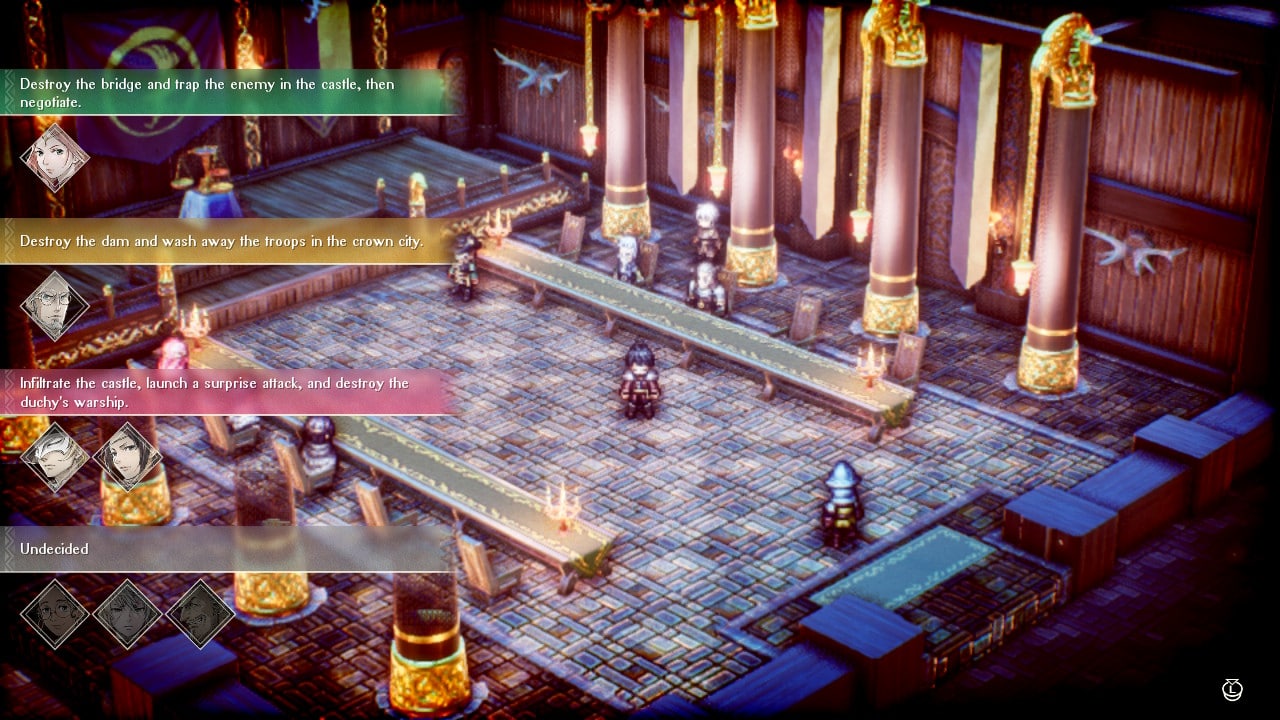
These decisions add up in meaningful ways too, significantly changing story events and leading to completely different battle scenarios with different playable characters. In fact, even strategic decisions you make inside of battles can sometimes have extra effects on the story, which is an excellent touch. Although, the way Triangle Strategy measures your choices goes overboard at times. Virtually everything you do adds invisible points to three different “Convictions” — Utility, Morality, and Liberty. They don’t actually matter much, but they do determine when you unlock some bonus allies.
Still, Triangle Strategy offers an impressive amount of replay value, and considering one playthrough lasts 40 hours in the first place, it’s a pretty meaty experience. New Game+ also unlocks after completion to let you keep your current team and do the story over again, but with higher-level enemies.
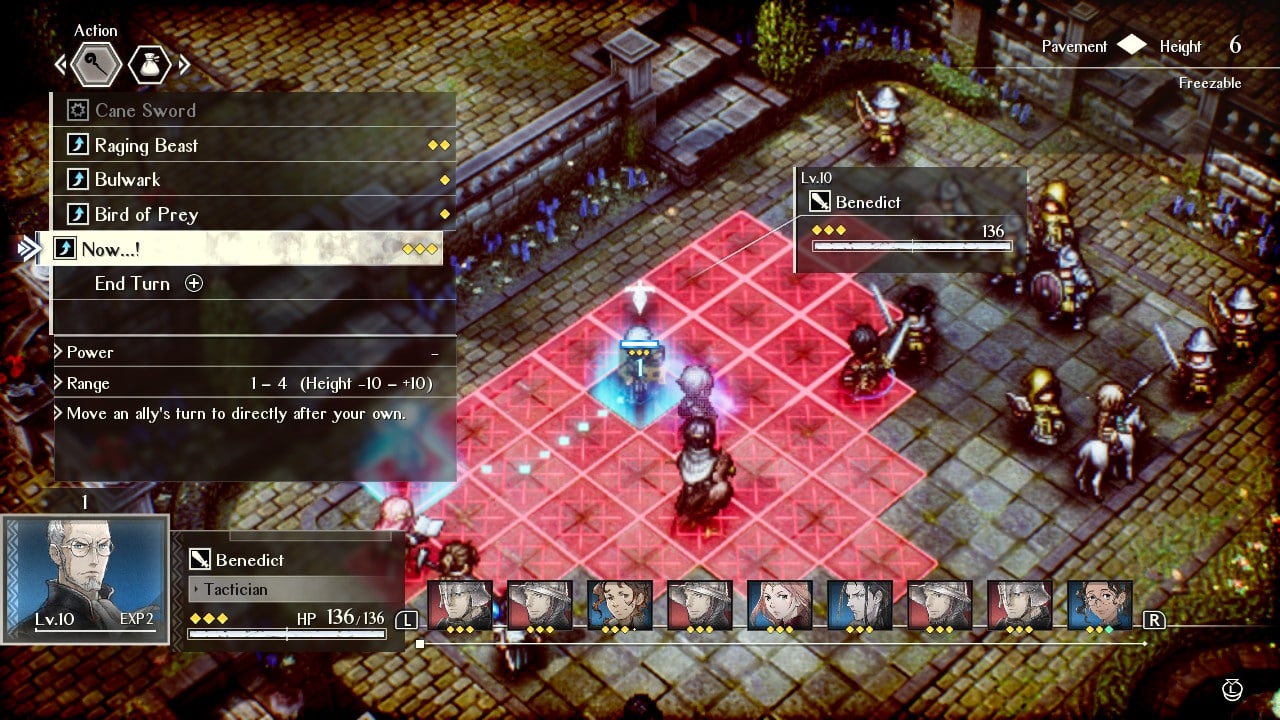
Combat Is Streamlined for a Simpler, More Approachable Experience
Combat in Triangle Strategy occurs on a traditional square grid, where individual units can move an allotted amount of spaces each turn and take an action. Some characters are faster at navigating steep elevations then others, and characters who are attacked from behind take more damage. So the simple act of movement and positioning involves plenty of strategy. Also, when two characters stand directly on either side of an enemy, they will do extra damage to the enemy because both characters will attack. It’s a novel wrinkle on the standard formula, and it really makes a difference in gameplay.
Unlike in Final Fantasy Tactics, every character you control in Triangle Strategy is unique, has a set class, and has set abilities. You can evolve characters’ class and weapon proficiency, and you can spend materials to slightly customize character stats or gain little boons like “increased damage from fire magic.” You can also equip a couple accessories (but not armor). But otherwise, the game has really streamlined the process of building your party — you just build a party out of the characters with the abilities you like using.
On one hand, it’s nice that the characters feel “plug and play” in this way; you won’t spend a lot of time in menus agonizing over how to customize a character. Each character feels genuinely distinct as well, with clear strengths and drawbacks and only one or two of them feeling a bit overpowered.
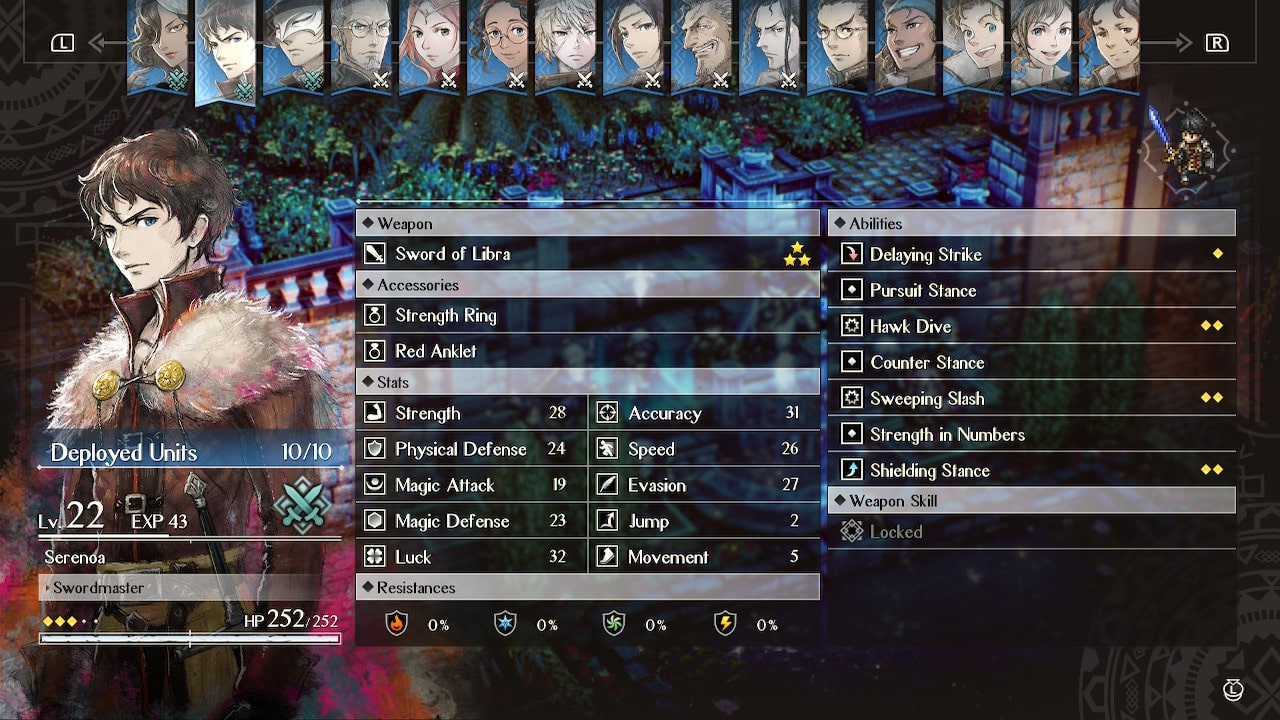
On the other hand, the spectacular strategic depth of Final Fantasy Tactics and its job system for customizing characters is utterly absent here. The game chooses ease of use over richness of mechanics. Still, it’s a choice that Triangle Strategy makes consciously, and it commits to it. This is even reflected in how the game approaches special abilities: Instead of spending MP, characters just use ability points that swiftly recharge each turn. Your next big attack is never far away. Your characters don’t suffer permadeath either; a dead character will instantly disappear from the battlefield (Revival options during battle are extremely limited.) but suffer no further penalty.
Triangle Strategy comes with four difficulty options: Very Easy, Easy, Normal, and Hard. I played on Normal throughout and only died on maybe three maps, which means it is dramatically easier in general than the brutal Tactics Ogre and Final Fantasy Tactics. I did have plenty of close calls though, so it’s not a pushover. And while I wouldn’t necessarily say the battle map layouts are as well-crafted as in those other two games, they’re still good enough for hours of entertainment.
Also, the soundtrack is terrific. It’ll keep you going through the good times and the my-party-is-doomed times.
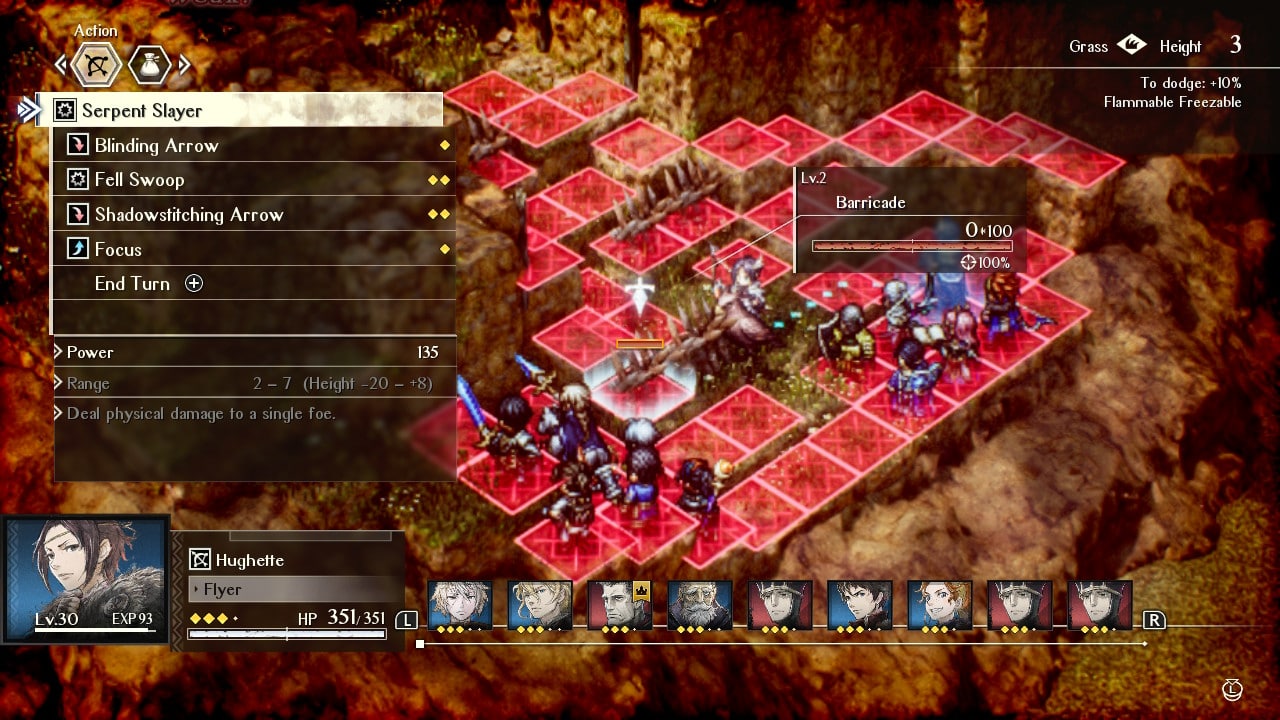
The Review Verdict on Triangle Strategy
Triangle Strategy lacks the gameplay depth of Final Fantasy Tactics, and it doesn’t come anywhere near the story richness of Tactics Ogre despite borrowing its branching-path narrative design. However, Triangle Strategy’s streamlined battle system is significantly more approachable and less likely to invoke frustration. Likewise, even with the narrative being as bland as it is, it’s exciting for its own sake to see what happens when you make a big, story-altering decision. The final result is a strategy RPG that is extremely easy to recommend to newcomers, and longtime enthusiasts will probably appreciate it too. Triangle Strategy isn’t Square at its best, but it might be Square at its most fun.
A Nintendo Switch review code for Triangle Strategy was provided by the publisher.

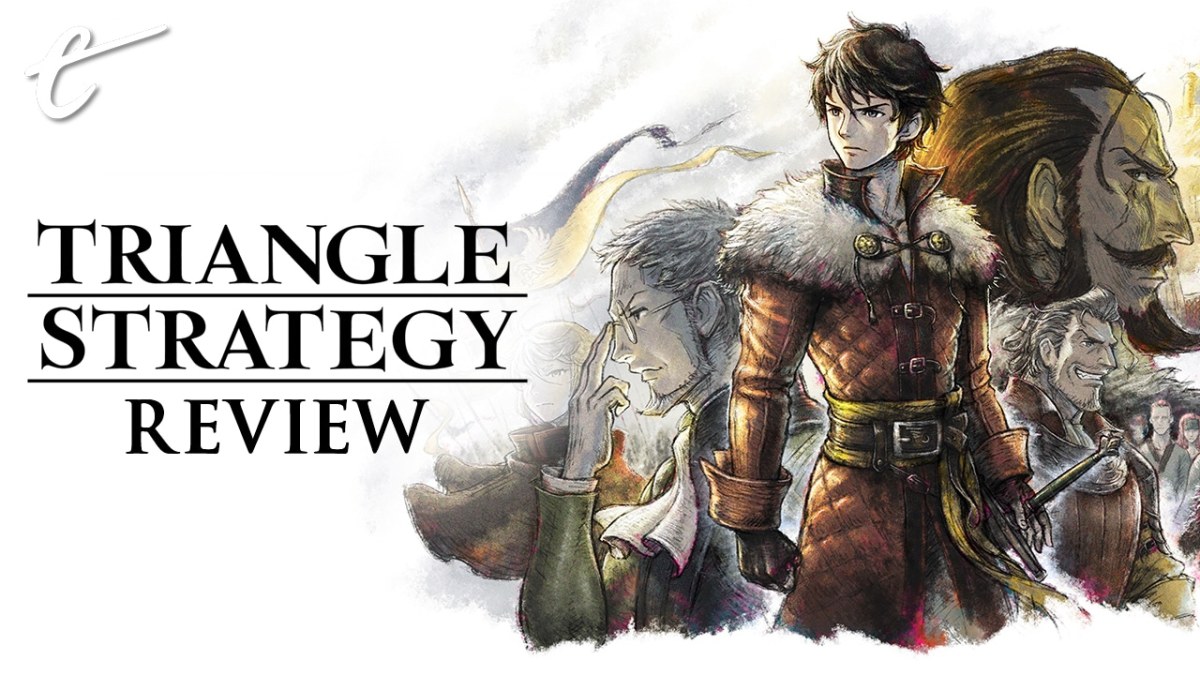




Published: Mar 16, 2022 11:00 am